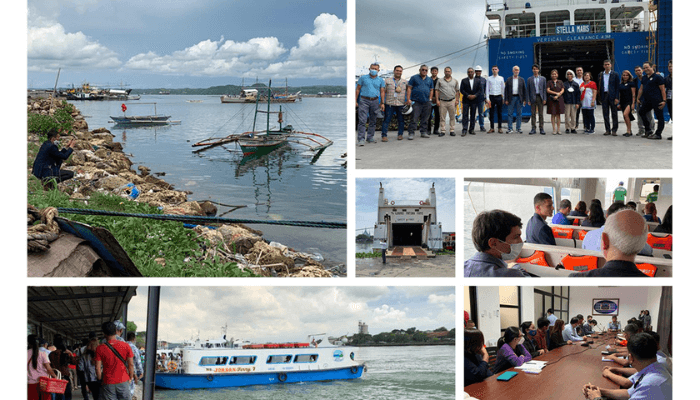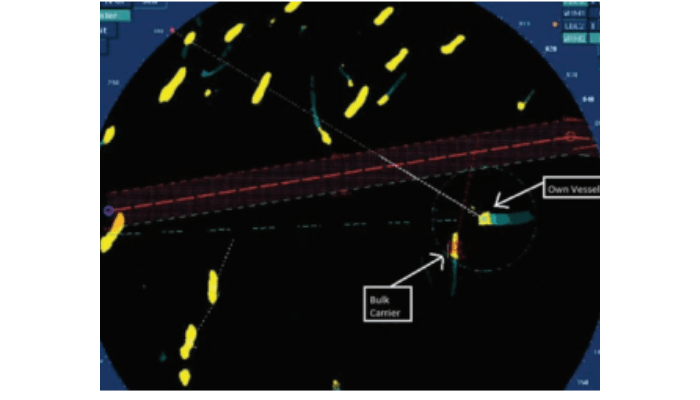July 28, 2022 Maritime Safety News
“We all know that about 90% of the world’s trade is carried by the international shipping industry. Without shipping, half the world would starve and the other half would freeze!” said Koji Sekimiza, former secretary-general of the International Maritime Organization.
In order to continue maintaining Singapore’s position as a global port hub and a premier international maritime centre, there is a need to establish a highly skilled and specialized workforce.
Diploma courses for post-secondary students
The Singapore Maritime Academy (SMA), located in Singapore Polytechnic, offers a wide array of courses for both students and working professionals.
For the post-secondary students, SMA offers courses targeting the business and engineering aspects of the industry. The Diploma in Maritime Business is a three-year program that offers a big picture on the shipping business activities as well as logistic-related aspects of maritime. According to SMA, graduates are highly sought after as junior executives in a plethora of organizations from ship owning to supply chain management.
As for the aspiring engineers, the Diploma in Marine Engineering is a three-year program covering various engineering disciplines such as mechanical, electrical and electronic, engineering design, and control technology that are required to make a ship an independent power plant. Students will have a comprehensive learning experience through hands-on training using engine simulators and ship design software, enrichment talks, ship visits and industry exposure.
The graduates of the Marine Engineering course can opt for a job at sea as an engineer or a shore-based job in the marine, service and oil industry. As a engineer onboard a ship, the starting monthly salary is around S$3,000 and can go up to about S$10,000 for a chief engineer, the highest position for an engineer onboard a ship.
In any stage of their seafaring career, graduates can opt to pursue further studies to transition to a shore-based job.
The three-year Diploma in Nautical Studies program is a “direct fast track to becoming a ship’s captain”, according to SMA. Aspiring captains would need to first undergo an eyesight test before going through an interview. This double-award program gives graduates a diploma and the internationally recognized professional Class 3 Certificate of Competency (CoC) qualification that allows them to sail as a certified sea-going officer worldwide.
Graduates of the Nautical Studies program also have the choice of choosing between a sea or shore career path. Graduates pursing a job on land may work as an executive in port, pilot, surveying and offshore services.
On the other hand, a junior officer on merchant or offshore and dynamic positioning vessels receives a starting monthly salary of around S$3,000, and the salary of a chief officer is about S$7,500. The ship master, the head of the ship, receives around S$10,000.
Similar to that of the marine engineering graduates, officers may pursue further education in any stage of their seafaring journey to transition into a shore-based job such as middle management in shipping, port, pilot, surveying and off-shore services.
Ngee Ann Polytechnic’s (NP) Diploma in Marine and Offshore Technology is the only program in Singapore that covers both Naval Architecture and Offshore Engineering. Graduates in this three-year program will learn to design and build their own ship models and get to test them in Singapore’s only towing tank located in NP’s campus throughout the three years of education.
The integrated real-world projects will give graduates an edge in creating innovative solutions for using clean energy, developing new materials and processes, as well as designing and building marine vessels and offshore structures.
Graduates can pursue a career in the design, marketing, commerce, survey, production, safety, human resource, and research and development areas of the marine and offshore industries. They can look forward to roles such as assistant design engineer, assistant production engineer and quality control engineer.
Maritime Studies degrees
Nanyang Technological University’s (NTU) Bachelor of Science in Maritime Studies is the only maritime business degree program in Singapore. The four-year program primarily focuses on shipping business and management. Courses include Marine Insurance, Shipping and the Environment, Shipping Economics, Maritime Law, Maritime Technology, Ship Chartering, Maritime Strategy and Shipping Logistics to equip graduates with knowledge for shipping and maritime related sectors.
In addition to the degree, students can enrol in second majors such as in Business or Data Analytics to broaden their horizon and equip themselves with additional proficiencies. The specialization in International Trading is also offered as part of the degree program to provide graduates with enhanced career opportunities in global commodity trading.
The Bachelor of Engineering with Honours in Marine Engineering/Naval Architecture/Offshore Engineering is a three-year direct honours degree program jointly offered by Singapore Institute of Technology (SIT) and Newcastle University.
Naval Architecture and Offshore Engineering students will learn about the engineering behind the design, structure, operation and management of ships and other large floating structures. Marine Engineering students will be exposed to marine engineering systems, from the main propulsion engines to auxiliary machineries like power generators, pumps, heat exchangers and other machinery within water, air and hydraulic systems.
Graduates can look forward to working in, but not limited to, Maritime Port Authority, shipping companies, shipbuilding and rig building yards, Republic of Singapore Navy, manufacturers or suppliers, ship brokering and chartering companies, marine and offshore original equipment manufacturers, statutory boards, consultancy and design companies, renewable energy companies, classification societies as well as oil and gas companies
The Maritime Business and Operations Track degree offered by Singapore Management University (SMU) is designed to provide graduates with understanding of the maritime business covering the economic, legal and managerial environment, as well as the operations of their organizations up and down the maritime and trade value chain.
Graduates will acquire knowledge in different business, operational, and management aspects such as port-focal logistics and maritime operations, shipping business, logistics and transportation and business analytics.
In addition, graduates are required to take up non-credit classes conducted by industry practitioners that range from tanker chartering and ship brokering to applications of data analytics and how robotics and automation are applied in the maritime sector.
Post-graduate courses
The Diploma (Conversion) in Maritime Business Management by SMA is a one-year part-time course that is designed to equip non-maritime graduates with the knowledge and skills in shipping operations and logistics/offshore management so that they can join the industry as senior executives/junior managers and perform their jobs with a greater level of competence and understanding.
This course is suitable for shipping, logistics and offshore executives, currently working in the industry but do not possess maritime qualifications or relevant sea-going experience. The course is also for nautical/engineering seafaring junior officers who may be keen to supplement their technical skills with commercial and operational knowledge to prepare them for a shore-based career.
Additionally, professionals in other relevant fields who are keen to switch to a career in the maritime industry can take up this course.
The Specialist Diploma in Maritime Superintendency is a one-year part-time course administered by SMA offers a comprehensive training to those who are seeking to attain the relevant knowledge and technical skills to plan, direct and coordinate the marine and technical operation from shore.
At the end of the course, graduates will acquire a sound understanding of the roles and responsibilities of a maritime superintendent to ensure safe, economic and efficient operation of the ships and offshore vessels. They will also be able to manage and operate vessels in accordance with organization policies, operating procedures and management systems.
The Diploma in Maritime and Offshore Management also by SMA is a one-year program for participants who do not possess maritime qualification to take up a career in the maritime and offshore industry.
The course is suitable for ambitious seagoing junior officers to gain more qualifications, and those currently working in non-maritime fields and would like to switch to a career in the maritime and offshore industry. It is also applicable for shipping, logistics and offshore executives currently working in the maritime industry but do not possess maritime qualifications or relevant seagoing experience.
The Master of Science in Maritime Studies in NTU provides young graduates and middle-management executives working in maritime related areas an avenue for higher education. Full-time study will take one to three years while part-time study takes two to four years.
Graduates will gain knowledge and tools to elevate from local business management to global settings. Overall, this program will uplift the local business practice and knowledge to a higher echelon in the international shipping scene, associated with business management, international shipping finance, chartering, and other related issues.
The Master of Science (Maritime Technology & Management) by National University of Singapore (NUS) is a program jointly hosted by the Department of Industrial Systems Engineering and Management (ISEM) and the Centre for Maritime Studies (CMS). Full-time study takes one year while part-time takes two years.
The program seeks to train and equip graduates with key skillsets to enable next-generation port capabilities in Singapore, such as industrial systems development, big data analytics tools, and emerging port technologies.
Source: https://maritimefairtrade.org/top-maritime-courses-singapore/







